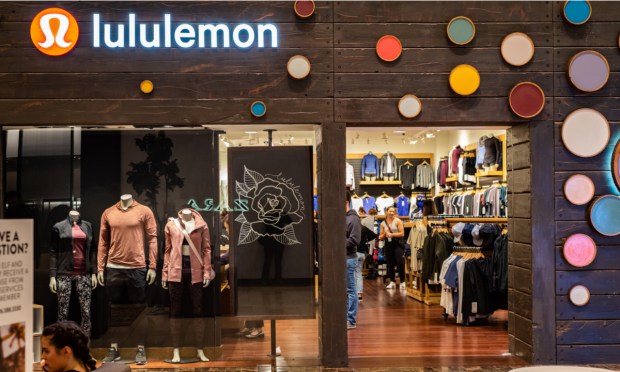
As consumers continue to feel the economic pressures, Lululemon is seeing shoppers spend more cautiously.
The athletic apparel retailer saw challenges in the United States, even as other markets quickly grow their adoption. The company shared in its fourth quarter and full year fiscal 2023 financial results Thursday (March 21) that it saw only 7% comparable sales growth in the Americas versus a 43% rise internationally.
“There’s been a shift in the U.S. consumer behavior of late, and we’re navigating what has been a slower start to the year in this market,” Lululemon CEO Calvin McDonald told analysts on a call. “We view this as an opportunity to keep playing offense as we lean into investments that will continue our growth trajectory outside the U.S.”
Indeed, even Lululemon’s target demographic of consumers with cash to burn have been cutting back in the face of ongoing economic challenges.
The recent PYMNTS Intelligence study, “New Reality Check: The Paycheck-to-Paycheck Report – Why One-Third of High Earners Live Paycheck to Paycheck,” which drew from a census-balanced survey of more than 4,200 U.S. consumers, found that nearly half of consumers earning more than $100,000 a year lived paycheck to paycheck as of January.
Moreover, the study revealed, while 60% of shoppers overall cut back on nonessential purchasing, 56% of high-income consumers did the same, and 28% of consumers in this group have switched to purchasing lower-quality products.
Additionally, U.S. consumers as a whole tend not to be overly optimistic about the impact that the economic climate will have on their spending power in the year ahead. The latest installment of the PYMNTS Intelligence “Consumer Inflation Sentiment” series, “The Cautious Spender: US Consumers Now Think First, Spend Second,” revealed that 57% of consumers expected higher retail prices in the next 12 months as of January.
Lululemon, for its part, is seeing these concerns impact spending across demographics.
“The slowdown we’re experiencing (in) the U.S. is fairly broad-based,” CFO Meghan Frank stated, adding that the company expects “some marginal improvement” going into the quarters ahead.
The company’s digital business is on the rise, with revenues from eCommerce channels up 17%, accounting for 52% of total revenue, slightly outpacing brick-and-mortar growth of 15%.
PYMNTS Intelligence’s study “2024 Global Digital Shopping Index: The Rise of the Click-and-Mortar™ Shopper and What It Means for Merchants,” commissioned by Visa Acceptance Solutions, which drew from a survey of nearly 14,000 consumers across seven countries, found that 29% are digital-only shoppers, preferring to buy online without interacting with stores, and 14% prefer to shop online for in-store pickup, while roughly one in three opt for in-store shopping without any digital engagement. The remaining 25% of consumers are in-store shoppers who use digital assistance to guide their brick-and-mortar journey.
As economic pressures continue to influence consumer behavior, Lululemon and other retailers are adapting to a shifting landscape where discretionary spending faces greater scrutiny. Despite Lululemon’s international growth, challenges persist in the United States market, where even high-income consumers are tightening their belts, though the retailer was still able to drive omnichannel growth.